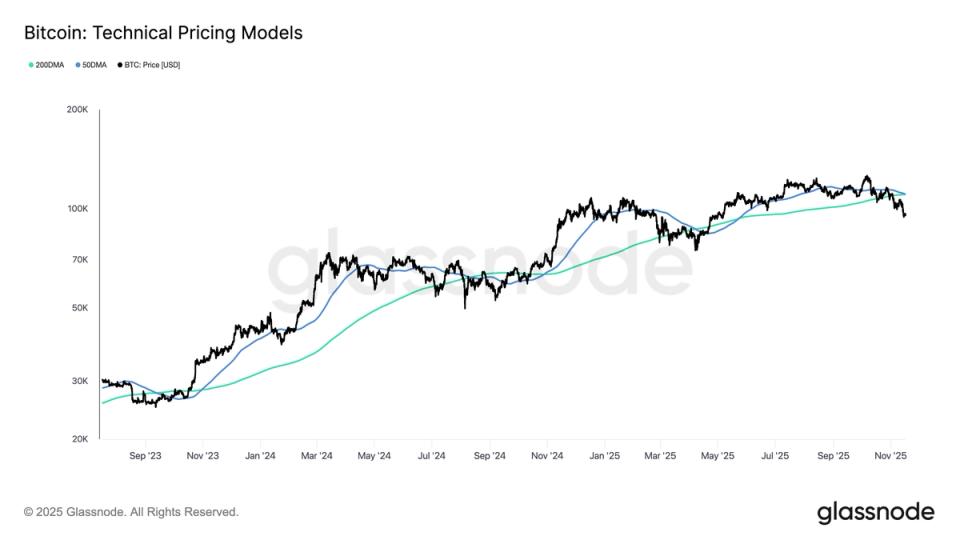Data from Glassnode shows that Bitcoin’s “death cross,” a technical analysis term that can indicate a bearish signal, is imminent, but with a catch.
Bitcoin’s 50-day moving average at $110,669 is now poised to fall below the 200-day moving average at $110,459, potentially triggering the death cross. This crossover is widely considered in technical analysis to be a bearish signal because it reflects a weakening of short-term momentum relative to the long-term trend.
However, this can also constitute a possible positive signal.
Bitcoin is currently down about 25% from its all-time high in October, around $126,000, and this correction has been going on for about 41 days. Despite the reputation of the Death Cross, this would be the fourth occurrence of the Death Cross since the cycle began in 2023 and each previous instance has aligned with a major local trough.
In September 2023, bitcoin reached a floor close to $25,000, in August 2024, during the unwinding of the yen carry trade, it found support around $49,000, then in April 2025, in a context of uncertainty around President Trump’s tariff policy, BTC fell below $75,000.
In the current setup, bitcoin has fallen to $94,000 and in the previous four instances, the market bottomed just before the death cross formed, raising the question of whether the same pattern could repeat itself.
Is this time different?
This current decline is less severe than the correction in April, when bitcoin fell below $75,000 during the tariff turmoil.
The April correction was both deeper and longer than the current correction, with bitcoin falling about 30% from January’s high near $109,000 and spending about 79 days on the decline before bottoming out in the first week of April. With a current decline of 25% and 41 days, further decline may still be possible.
However, the broader environment now includes the end of the US government shutdown on November 12. The closest comparison is the 2019 shutdown, when bitcoin fell more than 9% five days after the government reopened on January 25, 2019.
It took until February 9, 2019 for Bitcoin to recover, approximately two weeks.
This time around, bitcoin has already fallen 10% since reopening. The question now is whether the same pattern will repeat itself.




